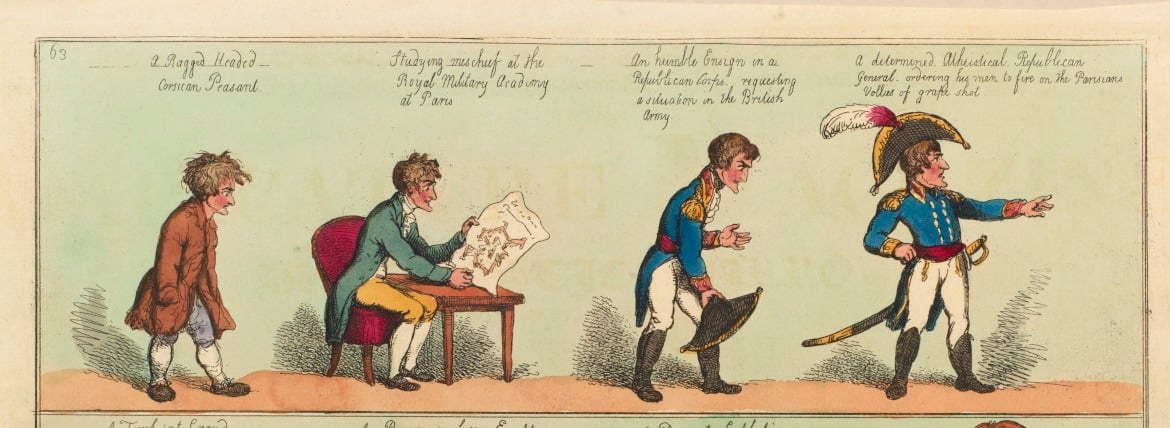Napoleon I
Napoleonic memorabilia collected after the Battle of Waterloo

On 18 June 1815 the French Emperor Napoleon (1729–1821) was defeated by an allied force at the Battle of Waterloo. This battle was a turning point for war-torn Europe, paving the way for peace negotiations after years of conflict.
After the French Revolution, Napoleon Bonaparte had seized power in France, and from 1799 ruled as First Consul and then as Emperor, undertaking increasingly militant and expansionist activities across the continent. His final defeat by the Duke of Wellington and Prussian Field Marshal Blücher was praised as a victory that 'saved the world'. Napoleon surrendered to the British and was exiled to the remote island of St Helena where he remained under guard until his death in 1821.
Following the battle, memorabilia associated with the war and with Napoleon was in high demand. The ground near Brussels where the engagement had taken place attracted large numbers of tourists and Napoleon’s captured carriage was brought to London for display to fascinated crowds. The Prince Regent, later George IV (1762–1830), eagerly celebrated the victory, collecting prints, drawings and works of art relating to the battle. The magnificent Waterloo Chamber at Windsor Castle was created as a memorial to the event, displaying Sir Thomas Lawrence’s portraits of those involved in the campaign and subsequent peace negotiations. This room was completed during the reign of George IV's brother, William IV (1765–1837). Edward VII (1841–1910) later created a Napoleonic Room at Marlborough House, which contained numerous sculptures, prints and paintings of the Emperor. However, it was Queen Mary (1867–1953) who did the most to rationalise the items in the Collection linked to Napoleon, putting many on display at Windsor Castle.
A lock of Napoleon Bonaparte's hair
©The Napoleonic origins of some objects collected by George IV and his successors is questionable. Because of the appeal of items that had belonged to the emperor, it may be that some things taken from the battlefield in 1815 were given imitation Napoleonic marks, making them look as though they had belonged to Napoleon to enable their more profitable re-sale. Other pieces were not used by Napoleon himself, but had been given by him as gifts to friends or relatives. Despite this, the Collection today includes the emperor's own travelling cutlery as well as an elaborate table he commissioned in expectation of continued military success.
Click on an object to learn more.







